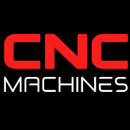Common CNC Machining Mistakes and How to Avoid Them

Common CNC Machining Mistakes and How to Avoid Them
CNC (Computer Numerical Control) machining is a sophisticated and precise manufacturing process, but even the most advanced technology is susceptible to human error. Frequent mistakes in CNC machining operations can lead to wasted materials, increased costs, and compromised product quality. In this article, we will highlight common CNC machining mistakes and provide actionable solutions to prevent these issues, ultimately improving productivity and quality in your operations.
1. Incorrect Tool Selection
Mistake
Using the wrong cutting tool for a specific material or application can lead to poor machining results, including excessive wear, heat buildup, and subpar surface finishes.
Solution
- Understand Material Properties: Familiarize yourself with the properties of the materials you are machining and choose tools designed for those specific materials.
- Consult Tooling Manuals: Utilize tooling manufacturer guidelines to determine the best tool for your application.
- Maintain a Tool Inventory: Keep an organized inventory of tools and their specifications readily available for quick reference.
2. Poor Machine Setup
Mistake
Inadequate machine setup, such as misalignment or improper fixturing, can cause inaccuracies in machining, leading to parts that do not meet specifications.
Solution
- Follow a Setup Checklist: Create and adhere to a comprehensive machine setup checklist to ensure all parameters are correctly set.
- Use Precision Fixtures: Invest in quality fixtures that securely hold the workpiece and maintain alignment during machining operations.
- Perform Regular Calibration: Schedule regular machine calibration to ensure precision and accuracy in your CNC machining processes.
3. Inaccurate Tool Path Programming
Mistake
Errors in G-code programming or CAM software can result in incorrect tool paths, causing machining errors or even machine crashes.
Solution
- Thoroughly Review Programs: Always double-check G-code programs for accuracy before running them on the CNC machine.
- Simulate Tool Paths: Use simulation software to visualize tool paths and identify potential issues before actual machining begins.
- Engage in Peer Reviews: Encourage team members to review each other's programs for additional insights and error detection.
4. Ignoring Cutting Parameters
Mistake
Neglecting to optimize cutting speeds, feed rates, and depth of cut can lead to excessive tool wear, poor surface finishes, and even part damage.
Solution
- Consult Tooling Guidelines: Refer to tooling manufacturer specifications for recommended cutting parameters based on material and tooling.
- Conduct Test Cuts: Perform test cuts to determine optimal parameters for specific setups and materials.
- Utilize Monitoring Systems: Implement monitoring systems that provide real-time feedback on machining parameters and performance.
5. Neglecting Maintenance and Cleaning
Mistake
Failing to perform routine maintenance and cleaning can lead to machine malfunctions, reduced accuracy, and compromised part quality.
Solution
- Establish a Maintenance Schedule: Create a routine maintenance schedule for machines, including lubrication, cleaning, and part replacement.
- Train Staff on Cleaning Protocols: Ensure that operators are trained to clean machines and tools after each use to prevent buildup and contamination.
- Monitor Machine Performance: Keep an eye on machine performance metrics to identify and address maintenance needs proactively.
6. Inadequate Quality Control
Mistake
Overlooking quality control measures can result in defects going unnoticed, leading to costly rework and wasted materials.
Solution
- Implement Quality Checks: Establish a quality control process that includes measuring critical dimensions and inspecting finished parts against specifications.
- Utilize Statistical Process Control (SPC): Incorporate SPC methods to analyze data and identify trends in part quality over time.
- Encourage a Quality Culture: Foster a workplace culture that prioritizes quality and encourages employees to take responsibility for their work.
7. Lack of Operator Training
Mistake
Under-trained operators may struggle with CNC machinery, leading to mistakes, inefficiencies, and safety hazards.
Solution
- Invest in Training Programs: Provide comprehensive training for new operators and ongoing education for existing staff on CNC technology and best practices.
- Create a Knowledge Base: Develop a resource library with training materials, manuals, and troubleshooting guides for quick reference.
- Promote Cross-Training: Encourage cross-training among team members to ensure flexibility and a better understanding of different machining processes.
Conclusion
By being aware of common CNC machining mistakes and implementing effective solutions, manufacturers can significantly enhance productivity and quality in their operations. Proper tool selection, meticulous machine setup, accurate programming, optimized cutting parameters, regular maintenance, robust quality control, and comprehensive training are key factors in avoiding costly errors.
Continuous improvement in CNC machining practices not only leads to superior product quality but also fosters a culture of excellence and efficiency in the manufacturing environment. Embracing these practices will ensure that your CNC machining operations remain competitive and successful in today's dynamic market.


